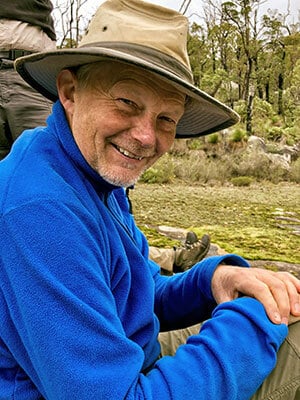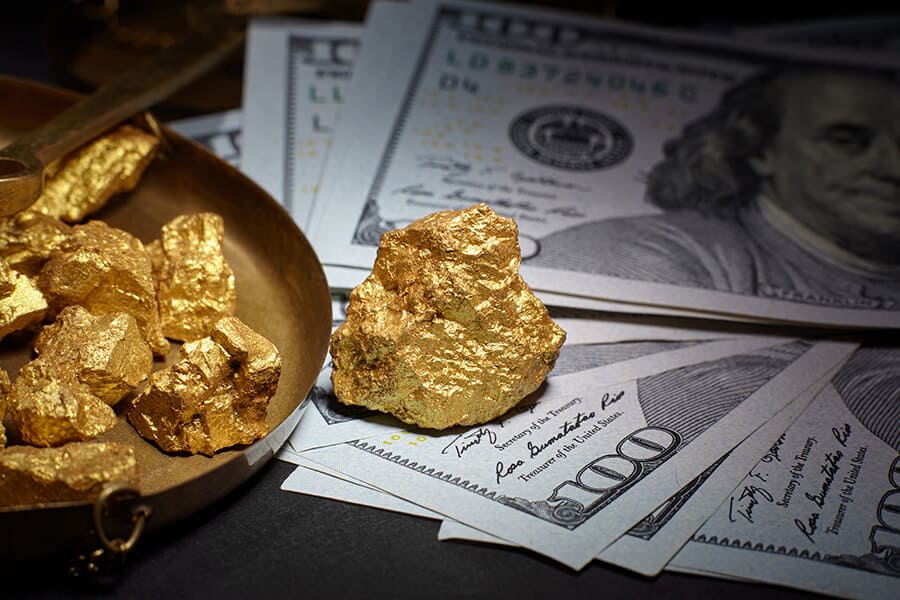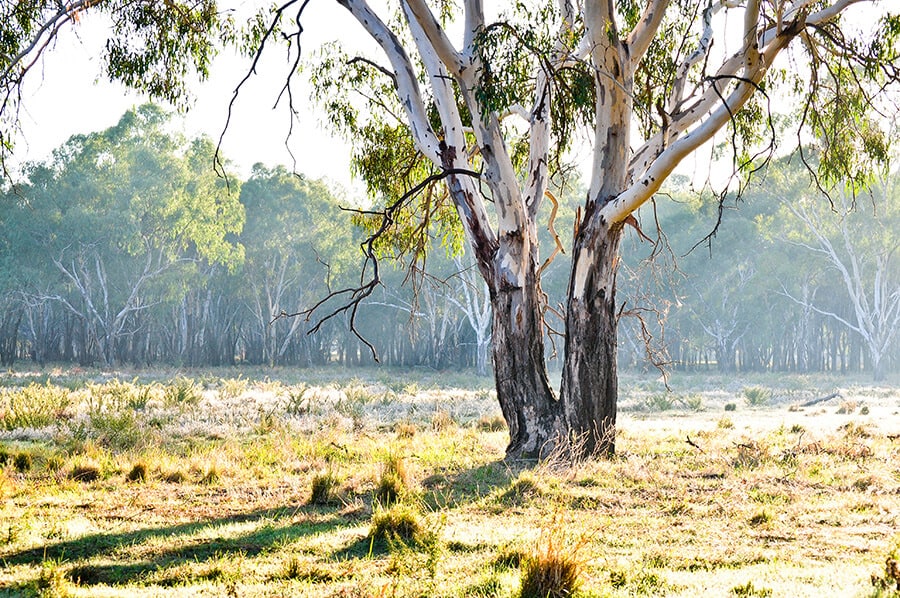Geochemistry is a vast subject and is employed for the discovery of natural resources. Among other methods groundwater and even eucalyptus leaves are analysed in order to commercialize the efforts of reaching and mining minerals. A fair part of this interview focuses on mining of gold, the demand for it and where the prices are headed. The interview also covers several other areas which our readers will find of interest.
Dr. Melvyn Lintern, what are the methods employed by scientists to explore these buried deposits?
There are two main methods used to search for buried mineral deposits. Buried mineral deposits are those that normally do not have a surface expression but are covered by sediments such as river gravels, colluvium or wind blow sands. Geophysical methods are used to search for ore bodies that can be detected by machines that emit and receive electromagnetic signals. Airborne geophysical machines can be towed behind, or transported by fixed wing aircraft, helicopter or drone-based transporters. Typically, they can detect large ‘conductive’ mineralised masses or even ore bodies such as massive sulphide deposits containing metals such as lead or zinc.
They can be used to conduct large scale surveys over tens to hundreds of square kilometres at relatively low cost. If a conductive body is detected then follow up geophysics or geochemistry is employed to refine the target for drilling. Geochemistry is a method that commonly requires the collection of samples of stream sediments, soils, drill cutting samples or plants which are then analysed by a laboratory for their metal contents. The samples are representative of the land from which they have been collected from. Metal concentrations are commonly found in low concentrations and are of little interest. However, sometimes high concentrations of metals are found which might indicate the presence of an ore body. If very high concentrations are found over a wide area or from drilling, then a mine may result. Much research has been undertaken to investigate processes by which some of these metals appear to migrate to the surface through the sediments and concentrate near the surface. One of these processes involves trees.

Dr. Melvyn Lintern is a renowned scientist with multiples of publications to his credit who spent more than three decades with CSIRO Earth Science and Resource Engineering, Australia is a world authority, not only on gold but also other natural resources.
One of your researches led you to eucalyptus trees. How did this happen and what did you find?
Although gold is supposed to be inert, under some circumstances tiny amounts can dissolve in the environment.
As a scientist I am curious and was interested in how and why large eucalyptus trees grow in near desert conditions in Australia. It turned out that eucalyptus trees have extensive root systems and have evolved other adaptations to survive in desert conditions. Some of these desert trees are well over 10 metres in height and have trunk diameters greater than a metre and have survived decades through hot Australian summers by having root systems that extend 10’s of metres in all directions away from the trunks. I was curious whether these trees were sucking up water and, in this way, would also take up metals dissolved in the water.
I had a colleague who sampled groundwater for metals and he showed that very small concentrations of metals dissolve in groundwater and get transported away from mineral deposits. What if some of these eucalyptus roots tap into the groundwater and adsorb some of this water and the dissolved metals and bring them to the surface and into their leaves? I decided to analyse the various parts of the tree, including the leaves, and found that the trees indeed were collecting tiny amounts of metals, including gold, that they had brought to the surface from deep down. Although gold is supposed to be inert, under some circumstances tiny amounts can dissolve in the environment.
Dr. Lintern, what is the shortfall between the demand and supply of gold given the insatiable appetite among people and the necessity for a safe haven.
Thousands of tonnes of gold are kept in vaults around the world
This is an area that I know little about but there is no doubt that demand is outstripping supply. Gold is a useful and sought-after metal and has been used in jewellery, electronics and dentistry because of its inert nature and ability to survive weathering under harsh conditions. However, one of its biggest uses is as a currency e.g. coins or as a safe haven to support a currency so that in troubling economic times, such as we are experiencing now with Covid-19, it provides governments and citizens with a valuable dependable commodity that can be used as a hedge against falls in currency, property, commodities or shares. So, thousands of tonnes of gold are kept in vaults around the world to support governments who hold it. On top of this, mineral exploration for gold is becoming increasingly more expensive as we have to search for deposits that no longer are found near the surface but are concealed deeper in the earth. Consequently, the price of gold increases to reflect the demand.
Will this shortfall continue to increase, in your opinion?
Pharaoh sarcophagi that have been gilded with gold have the same appearance now as when they were first adorned.
Gold is becoming harder to find since many of the easy surface deposits have already been found. If we do not find new methods of discovery this can only contribute to the shortfall. The shortfall in gold supply will only get worse as we consume and store more gold. The demand for it will increase as the supply decreases. Gold is an attractive metal in its own right and has always fascinated mankind because of its yellow lustre and its ability to not tarnish. Pharaoh sarcophagi that have been gilded with gold have the same appearance now as when they were first adorned. Gold coins from sunken galleons are retrieved from the ocean and are as shiny as the day the ships were sunk. It’s familiarity to the world’s population, rarity and inertness, means gold will retain its value through generations of owners and be attractive to investors and industry-users.
The metal has been continuing to hold within sight of 2000 $ an ounce for quite some time now and many of the buffs talk about it reaching 25,000 dollars. Do you see this as a reality from a scientists view point?

Once it reaches $2000 you will hear someone talking about $3000.
The price of gold continues to rise and as each milestone of value is reached there is always someone speculating that it will reach another – a little bit higher – first it was $500, then $1000 and now we talk of $2000. Once it reaches $2000 you will hear someone talking about $3000. And so on. However, I have not heard it will reach $25k and it would seem that it would take a long time to reach this! Personally, I have no opinion on the price of gold and those that buy it for investment are speculators or gamblers since they have little chance of being able to predict what the market will do against the many factors that influence the price. In the current economic climate, the price of gold is sensitive to medical news about Covid-19. Many countries affected by Covid-19 also have gold mines operated by skilled workers. If these workers become affected by Covid-19 there is every chance the mines will shut down imperilling the supply of gold to the world. On the other hand, however, if a vaccine is announced the price of gold would suddenly dip as speculators would sell gold in favour of other areas of the global financial system. It is anybody’s guess.
Photos: From the Archive of Dr. Lintern / Shutterstock
Stay with us for the next part of the interview with Dr. Lintern, published on Friday August 7th!
More interviews here:
Shaped by Social Media and Likes? – with Dr. David Stillwell. Part II
Support us!
All your donations will be used to pay the magazine’s journalists and to support the ongoing costs of maintaining the site.
Share this post
Interested in co-operating with us?
We are open to co-operation from writers and businesses alike. You can reach us on our email at cooperations@youthtimemag.com/magazine@youthtimemag.com and we will get back to you as quick as we can.









